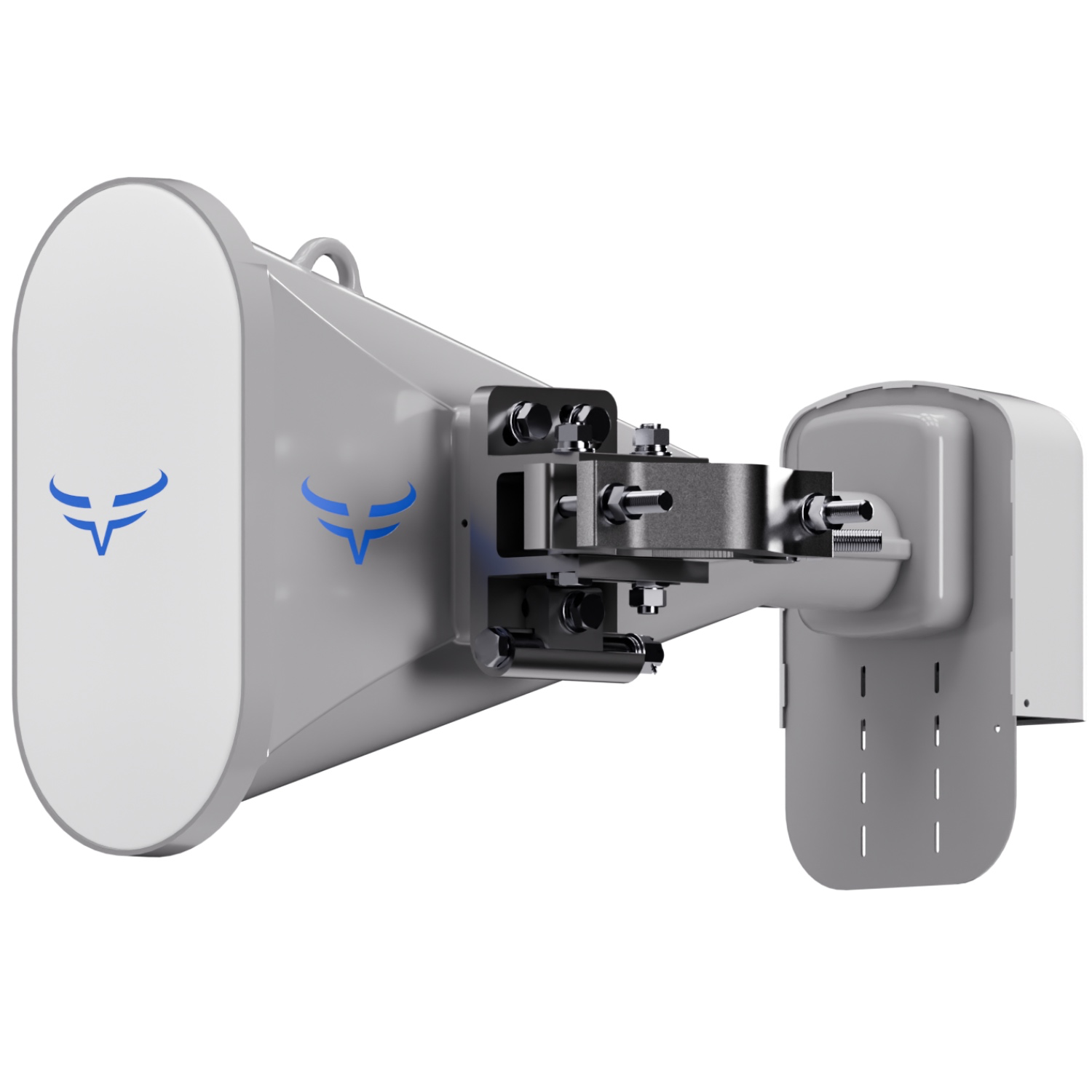




Product Description:
The Wideband 6 GHz 30° Asymmetrical Horn Antenna is designed to help WISPs scale up their businesses and deliver better service to subscribers in noisy environments by dividing larger sectors. Dividing traditional 90° or 120° sectors into multiple 30° horn sectors concentrates the signals and reduces the amount of noise and interference that the access points pick up. Dividing sectors also decreases the number of stations per access point, giving each station more airtime. Also, on average, each station is closer to the center of the beams, where the signals are strongest and the chains are most balanced. This horn antenna is ideal for dividing sectors because the main lobe’s beam pattern drops off sharply at 30° enabling easier AB channel planning and frequency reuse.

Wideband 6 GHz Asymmetrical 30° Horn Antenna
Model Number: WB6-A30
High-gain 30° horn sector antenna supports 5 GHz and 6 GHz WISP point-to-multipoint (PtMP) access points from Ubiquiti, Cambium, and Mimosa.
Features
- •Quarter power (-6 dB) beam width: 30°
- •Frequency range: 4.9-7.2 GHz
- •Gain: 18.5-21 dBi
- •Port isolation: >35 dB
- •VSWR: <1.6
- •Front-to-back ratio: 40 dB
- •Polarization: Dual-Linear (H/V) 2x2 MIMO
- •Connectors: RP-SMA male pigtails (included)
- •Weather rating: IP67
- •Ubiquiti compatibility: Wave-MLO5, Wave-MLO6, RP-5AC-Gen2, LTU-Rocket
- •Cambium compatibility: ePMP 3000L, ePMP 4500L, ePMP 4600L
Documentation
Industry-leading RF performance
With industry leading gain and antenna efficiency, the WB6-A30 enhances network reliability, boosts subscriber satisfaction, and significantly improves signal strength, modulation rates, and subscriber speeds.
With its future-ready support for the entire 5 and 6 GHz bands, the WB6-A90 is ready for upcoming Wi-Fi 6e AX and Wi-Fi 7 BE technologies, helping you stay ahead of the competition and meet growing customer demands.
WISPs report faster, more reliable services
Service providers using the WB6-A30 see immediate improvements in network performance. Customers experience stronger, more consistent connections with fewer interruptions, even in challenging environments. This reliability allows WISPs to deliver higher speeds, reduce support calls, and build a reputation for dependable service that keeps subscribers satisfied and loyal.
More successful customer installations
With the WB6-A30, WISPs can count on smoother, more predictable installation. The precise coverage and reduced interference mean fewer signal issues during installation, leading to faster, more successful customer installations. This reduces repeat visits, lowers support costs, and builds customer trust right from the start.
Related Products
No related products found.